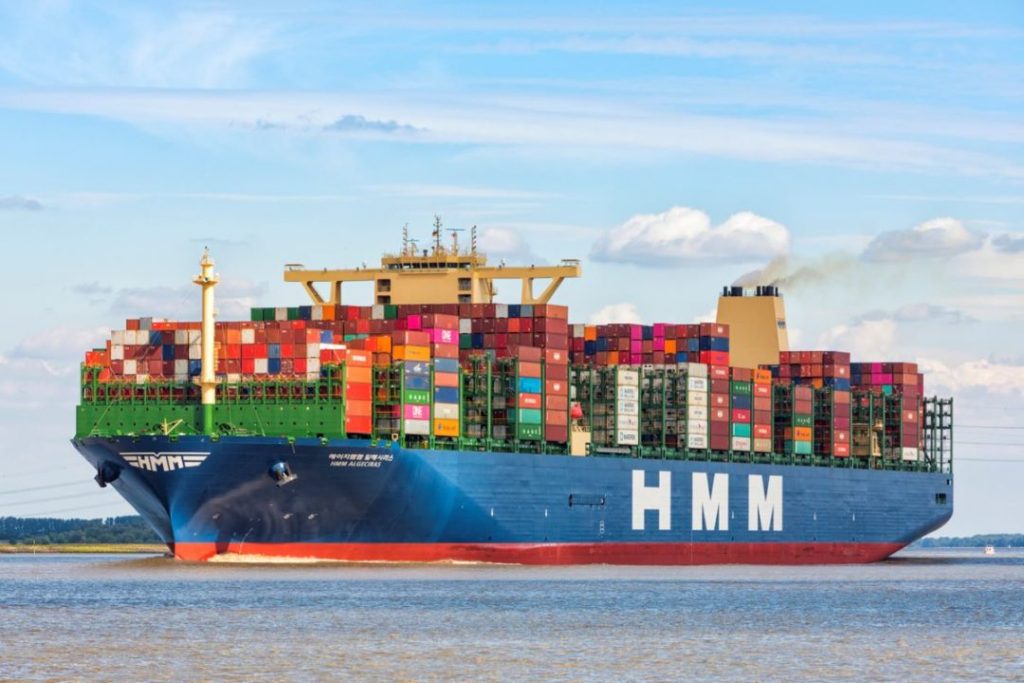Why Container Lines Don’t Fear the Massive Supply of New Ships on Order

The world’s major ocean container lines can’t get enough of big new ships — never mind the threat of severe overcapacity and a resulting downward pressure on freight rates.
The number of containerships on order equates to around 7 million 20-foot equivalent units (TEUs) — nearly a quarter of the capacity of the current global fleet, according to Jan Tiedemann, senior analyst with Alphaliner.
Can the trades absorb such a huge influx of new capacity without a serious impact on rates and service? “The jury’s out,” Tiedeman said at S&P Global’s TPM24 conference in Long Beach, California. Still, while acknowledging skepticism among industry observers about carriers’ deployment strategies for the next few years, he suggested that the new ships won’t necessarily make as big a splash as one might expect.
Tiedemann cited several reasons why the coming flood of newbuildings might not be “as crazy as it looks.” One is the relatively long timeline for delivery of the new ships, stretching in some cases to 2029. “The vast majority is going to come quite late,” he said.
Another mitigating factor is the possibility that a number of the containerships currently serving major trade lanes will have to be scrapped to make room for the new vessels. Normally, displaced ships would be shunted off to feeder services or niche trades, but a “fair number” of those now in service are too big to call at any but the largest ports, Tiedemann said. And many of them are more than 20 years old, lacking the operating efficiencies and “green” design of modern vessels. (More than half of the current containership orderbook consists of vessels that will burn alternative fuels such as liquid natural gas and methanol, Tiedemann noted.) So the only option is the scrapyard.
At least some of the capacity on order might end up being needed by carriers for reasons other than expanded market demand. To save on fuel and operating costs, container lines today are slowing down their ships. And that calls for additional capacity in order to maintain schedule integrity.
“You need more tonnage to carry the same amount of containers,” Tiedemann said. Similarly, disruptions such as the recent missile attacks on commercial shipping in the Red Sea are necessitating the rerouting of vessels around the Cape of Good Hope, further stretching voyage duration. In some cases, at least two additional ships — an overall increase in tonnage of around 16% — are required in East-West service to maintain schedules.
The Red Sea crisis isn’t likely to abate in the near future, said Jeremy Nixon, chief executive officer of Ocean Network Express. “We think [the need to divert ships around the Cape of Good Hope] is here to stay for a while longer,” he said. “We’re baking that into forward projections, and don’t see much changing in the next two to three months.”
Eager to boost resilience in the face of endless geopolitical and economic crises, carriers might be acquiring a taste for a certain amount of overtonnaging. “Supply and demand don’t have to be in perfect equilibrium,” said Rolf Habben Jansen, chief executive officer of ocean carrier Hapag-Lloyd. He believes that the lines’ relentless investments in new capacity over the years has been a “blessing in disguise,” equipping them with a buffer supply that can be deployed in times of crisis. If the latest wave of new ships hadn’t been delivered over the past year, he said, “we wouldn’t have been able to deal with the crisis in the Red Sea.”
All of which means that container lines don’t fear the consequences of their insatiable hunger for more ships. “All things considered,” Tiedemannn said, “we believe the orderbook might be manageable — on the condition that the market remains stable as it is now.”

